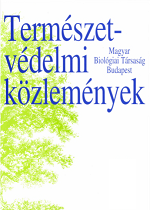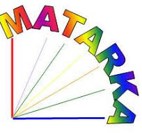Szegélyek szerepe a diverzitás fenntartásában futóbogarak esetén
Absztrakt
Kutatásunk során futóbogarak diverzitásának változását vizsgáltuk az Aggteleki Nemzeti Parkban egy gyertyános-tölgyes belsejéből az erdőszegélyen át a szomszédos gyepig húzódó transzektek mentén talajcsapdás mintavétellel. Eredményeink azt mutatják, hogy szignifikáns szegélyhatás figyelhető meg futóbogarak esetén: a diverzitás szignifikánsan magasabb volt az erdőszegélyben és a gyepben, mint az erdő belsejében. A habitatok fajösszetétel és abundancia alapján is elkülönültek nem-metrikus ordináció segítségével, jelezve, hogy a három habitat egymástól eltérő fajegyüttessel rendelkezik. Kvantitatív karakterfaj-elemzés segítségével az alábbi csoportok jellemző fajait azonosítottuk: (1) habitat generalisták, (2) gyepre jellemző fajok, (3) erdei generalisták, (4) erdei specialisták, (5) szegély specialisták. Eredményeink megmutatták, hogy az erdőszegély magas diverzitása egyrészt a szegélyhez kötődő fajok, másrészt a szomszédos területekre jellemző fajok jelenlétének köszönhető. Mindez kiemeli az erdőszegélyek konzervációbiológiai fontosságát, mivel a diverzitás fenntartásában kulcsszerepet töltenek be.
Hivatkozások
Bedford, S. E. & Usher, M. B. (1994): Distribution of arthropod species across the margins of farm woodlands. - Agriculture , Ecosystems and Environment 48: 295-305.
Butterfield, J., Luff, M. L., Baines, M. & Eyre, M. D. (1995): Carabid beetle communities as indicator of conservation potential in upland forests. - Forest Ecology and Management 79: 63-77. den Boer, P. J. (1970): On the significance of dispersal power for populations of carabid-beetles (Coleoptera, Carabidae). - Oecologia 4: 1-28.
den Boer, P. J. (1981): On the survival of populations in a heterogeneous and variable environment. - Oecologia 50: 39-53.
Dufrene, M. & Légendre, P. (1997): Species assemblages and indicator species: the need for a flexible asymmetrical approach. - Ecological Monographs 67: 345-366.
Freude, H., Harde, K. W. & Lohse, G. A. (1976): Die Käfer Mitteleuropas. - Goecke and Evers Verlag, Krefeld, 302 pp.
Lövei, G. & Sunderland, K. D. (1996): Ecology and behavior of ground beetles (Coleoptera: Carabidae). - Ann . Rev. Entomology 41: 231-256.
Magura, T. & Tóthmérész, B. (1997): Testing the edge effect on carabid assemblages in a deciduous forest. - Acta zool. hung. 43: 303-312.
Magura, T. & Tóthmérész, B. (1998): Edge effect on carabids in oak-hornbeam forest at Aggtelek National Park (Hungary). - Acta Phytopat. Entomol. Hung. 33: 379-387.
Magura, T., Tóthmérész, B. & Bordán, Zs. (2002): Carabids in oak hornbeam forest: testing the edge effect hypothesis. - Acta Biol. Debrecina 24: 235-249.
Magura, T., Tóthmérész, B. & Molnár T. (2000): Spatial distribution of carabid species along grass forest transects. - Acta zool. hung. 46: 1-17.
Magura, T., Tóthmérész, B. & Molnár, T. (2001a): Forest edge and diversity: carabids along forest- grass transects. - Biodiversity and Conservation 10: 287-300.
Magura, T., Tóthmérész, B. & Molnár, T. (2001b): Edge effect on carabids along forest-grass transects. - Web Ecology 2: 7-13.
Molnár, T., Magura, T. & Tóthmérész, B. (2001): Ground beetles (Carabidae) and edge effect in oak-hornbeam f rest-grassland transects. - European J. Soil Biol. 37: 297-300.
Murcia, C. (1995): Edge effects in fragmented forests: implications for conservation. - Tree 10: 58-62.
Niemelä, J. K. & Spence, J. R. (1994): Distribution of forest dwelling carabids (Coleoptera): spatial scale and the concept of communities. - Ecography 17: 166-175.
Niemelä, J., Spence, J. R. & Spence, D. H. (1992): Small-scale heterogeneity in the spatial distribution of carabid beetles in the southern Finnish taiga. - J. Biogeogr. 19: 173-181.
Niemelä, J., Haila, Y. & Punttila, P. (1996): The importance of small-scale heterogeneity in boreal forests: variation in diversity in forest-floor invertebrates across the succession gradient. - Ecography 19: 352-368.
Pulliam, H. R. (1988): Sources, sinks, and population regulation. -Amer. Naturalist 132: 652-661.
Saunders, D. A., Hobbs, R. J. & Margules, C. R. (1991): Biological consequences of ecosystem fragmentation: a review. - Conservation Biology 5: 18-32.
Thiele, H. U. (1977): Carabid Beetles in their Environments. - Springer Verlag, Berlin, 369 pp.
Tóthmérész, B. (1993): NuCoSA 1.0: Number cruncher for community studies and other ecological applications. - Abstracta Botanica 17: 283-287.
Tóthmérész, B. (1995): Comparison of different methods for diversity ordering. - J. Veg. Sei. 6: 283-290.






